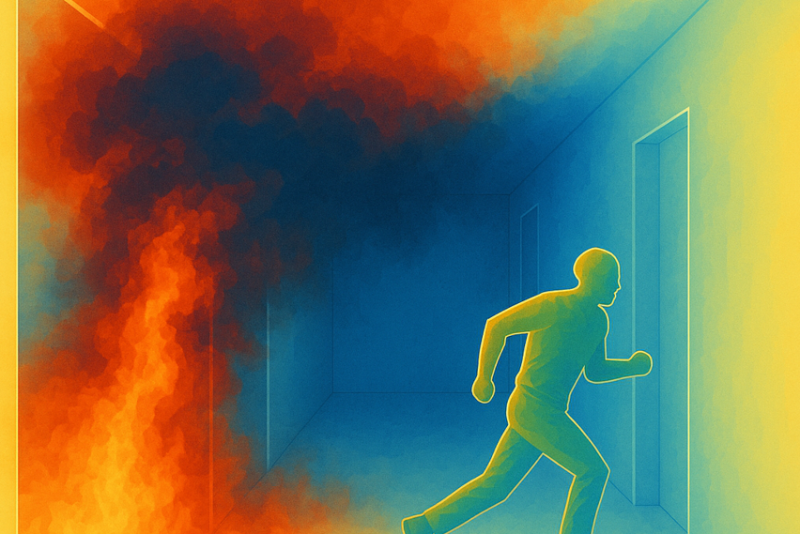
In performance-based fire engineering, ASET (Available Safe Egress Time) and RSET (Required Safe Egress Time) are two critical metrics that determine whether occupants can evacuate safely during a fire emergency. Understanding and applying the relationship between ASET and RSET is essential for fire safety engineers developing performance solutions.
Available Safe Egress Time (ASET) is the amount of time available for occupants to evacuate a space before conditions become life-threatening due to smoke, heat, or toxic gases.
ASET is typically calculated using CFD simulation software, such as the Fire Dynamics Simulator (FDS) or Pyrosim, which models the development and spread of fire, smoke layers, and temperature changes over time.
Key factors influencing ASET include:
Required Safe Egress Time (RSET) is the total time occupants need to recognise the fire, respond to it, and safely evacuate the building. RSET is broken into distinct stages and depends heavily on occupant behaviour and building layout.
The three core components of RSET are:
To model RSET accurately, engineers use egress simulation tools like Pathfinder, which factor in real-world elements such as:

For a design to be considered safe and compliant, ASET must be greater than RSET with a sufficient safety margin
This means occupants must have more time available than they need to evacuate, and ideally with a safety margin built in to account for uncertainties or unexpected delays.
If RSET approaches or exceeds ASET, it indicates that occupants could be exposed to hazardous conditions before reaching safety. In such cases, design improvements must be made, such as:
The margin of safety in fire safety engineering refers to the buffer between the ASET and the RSET. It accounts for uncertainties in both fire development and human behaviour, ensuring that occupants have sufficient time to evacuate even if conditions deviate from expected scenarios.
A larger margin provides greater assurance that the design will remain effective under real-world conditions such as delayed detection, slower occupant response, or unexpected obstructions. While ASET simply being greater than RSET satisfies the basic requirement, incorporating a reasonable safety margin, typically between a factor of 1.5 to 2 reflects a more robust and resilient fire safety strategy.
ASET and RSET are more than just technical terms—they are life-saving metrics at the heart of modern fire safety design. By understanding the delicate balance between them, fire safety engineers can go beyond code compliance and deliver resilient, occupant-centred solutions.
If you are developing a project that requires fire safety analysis or evacuation modelling, get in touch with Lava Consultants to explore how a performance-based approach can improve safety, flexibility, and confidence in your design.
© 2025 Lava Consultants. All rights reserved